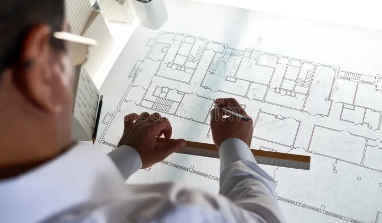Engineering is a discipline built on precision, innovation, and problem-solving. However, even the most well-planned engineering projects sometimes end in failure. These failures, while costly, serve as powerful learning opportunities. Understanding why projects fail and how to prevent those mistakes is crucial for future success. In this article, we’ll explore notable lessons from engineering project failures and provide strategies to avoid repeating them.
Understanding Why Engineering Projects Fail
Failures in engineering projects rarely stem from a single cause. They typically result from a combination of technical, managerial, financial, and communication issues. Some common factors behind project failures include:
- Poor planning and unrealistic expectations
- Inadequate risk management
- Design flaws and engineering errors
- Budget overruns and funding shortfalls
- Miscommunication among stakeholders
- Failure to adapt to changing circumstances
- Neglect of safety and compliance standards
By studying real-world examples, engineers and project managers can pinpoint critical areas that require careful attention.
Famous Engineering Project Failures and Their Lessons
1. The Tacoma Narrows Bridge Collapse (1940)
What Happened:
Known as “Galloping Gertie,” the Tacoma Narrows Bridge in Washington collapsed just four months after opening, due to aeroelastic flutter caused by wind.
Key Lessons:
- Thorough testing for environmental factors is essential.
- Ignoring dynamic forces can lead to catastrophic structural failures.
- Bringing in specialists early in the design process can identify overlooked risks.
How to Avoid Similar Failures:
- Conduct extensive environmental simulations.
- Incorporate wind tunnel testing for large structures.
- Foster interdisciplinary collaboration between structural and environmental engineers.
2. The Challenger Space Shuttle Disaster (1986)
What Happened:
NASA’s Challenger shuttle broke apart 73 seconds after launch, resulting in the tragic loss of all seven astronauts. The cause was a failure of O-ring seals in cold weather.
Key Lessons:
- Ignoring warnings from engineers can be fatal.
- Organizational pressure and rushed schedules compromise safety.
- Risk communication must be clear, honest, and prioritized over deadlines.
How to Avoid Similar Failures:
- Prioritize safety above project timelines and politics.
- Empower engineers to voice concerns and halt projects if necessary.
- Establish transparent and rigorous review processes.
3. The Boston Big Dig (1991–2007)
What Happened:
The Big Dig, an ambitious project to reroute Boston’s central artery, was plagued by cost overruns, design flaws, leaks, and a tragic ceiling collapse.
Key Lessons:
- Scope creep leads to uncontrolled budgets and delays.
- Cutting corners on materials and workmanship causes long-term issues.
- Continuous quality control throughout construction is vital.
How to Avoid Similar Failures:
- Define project scope clearly and resist unnecessary changes.
- Invest in high-quality materials and skilled labor.
- Perform frequent, independent quality audits during construction.
4. The Millennium Bridge Wobble (2000)
What Happened:
London’s Millennium Bridge began to sway alarmingly on its opening day due to unexpected synchronous pedestrian movement.
Key Lessons:
- Human interaction with structures must be modeled accurately.
- Unexpected behaviors can emerge from large groups.
- Rapid problem-solving can restore public trust.
How to Avoid Similar Failures:
- Simulate real-world human behavior in design models.
- Include flexibility in project budgets and timelines for unforeseen adjustments.
- Act swiftly and transparently when issues arise.
Critical Strategies to Prevent Engineering Project Failures
Learning from past mistakes is essential, but proactive strategies are even more important. Here’s how modern projects can sidestep common pitfalls:
1. Comprehensive Risk Assessment and Management
Before even starting the design, perform:
- Risk identification
- Risk analysis (likelihood and impact)
- Mitigation planning
- Regular risk reassessment throughout the project lifecycle
Use tools like Failure Mode and Effects Analysis (FMEA) to systematically uncover potential problems early.
2. Clear and Consistent Communication
Miscommunication between stakeholders, teams, and contractors is one of the leading causes of project derailment.
Establish:
- Clear lines of communication
- Regular updates and progress meetings
- A culture where concerns can be raised without fear
Communication tools like project management software, centralized documentation, and real-time collaboration platforms can streamline this process.
3. Realistic Budgeting and Scheduling
Ambitious timelines and tight budgets may seem appealing but often result in failure.
Instead:
- Build contingency plans into the budget.
- Set achievable milestones with flexibility.
- Prepare for the unexpected by allocating resources for overruns.
A realistic plan fosters better decision-making and reduces stress on teams.
4. Investing in Quality Assurance
Never compromise on:
- Material quality
- Engineering accuracy
- Construction standards
Continuous inspection and testing, both during design and build phases, ensure that issues are caught early when they are easier and cheaper to fix.
5. Prioritizing Safety at Every Stage
Safety should be the foundation, not an afterthought:
- Conduct hazard analyses
- Integrate safety engineering principles from the beginning
- Train teams rigorously on compliance and best practices
A safety-first mindset not only saves lives but also protects reputations and budgets.
6. Flexible Project Management Methodologies
Adaptability is crucial.
Modern engineering projects can benefit from hybrid methodologies like:
- Agile for rapid iterations
- Waterfall for clear milestones
- Lean principles for efficiency
Choosing the right management style based on project type and phase can help adjust to changes without losing control.
The Hidden Value of Failure: Building a Culture of Learning
While avoiding failure is the goal, when it does happen, organizations should:
- Conduct thorough post-mortems
- Share lessons learned across teams
- Update protocols and designs based on findings
Rather than punishing mistakes, promoting a learning culture fosters continuous improvement and innovation.
Conclusion: Engineering Success Through Vigilance and Learning
Engineering is as much about learning from failure as it is about achieving success. By studying historical examples, implementing robust risk management, maintaining clear communication, and fostering a culture of safety and learning, future projects can avoid costly mistakes.
Failure is a tough teacher, but when its lessons are taken seriously, it can become the foundation for enduring success and groundbreaking innovation.
Would you like me to also create a quick checklist of “Top 10 Signs Your Engineering Project Might Be at Risk”? 🚀
Also Read :
